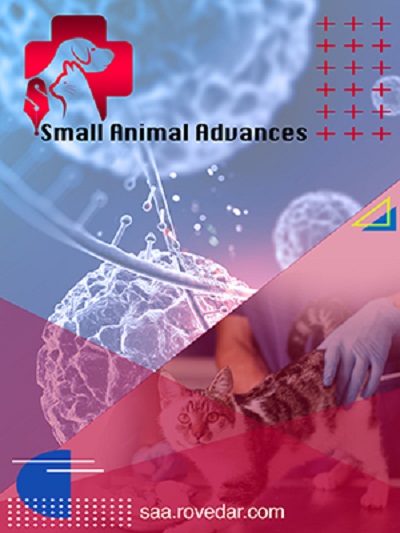Successful Management of Concurrent Scabies and Dermatophytosis in a Chippiparai Pup
Main Article Content
Abstract
Introduction: Skin diseases are the most common problem in dogs. Due to the hot and humid climate, their prevalence is high in Puducherry, India.
Case report: In this case report, concurrent infection of scabies and dermatophytosis was observed in a 2-month-old Chippiparai male pup presented to the Veterinary clinical complex, Mettupalayam, Puducherry, India. The clinical signs were intense scratching, crusty lesions, and an off odor. The temperature was 99.7℉, the heart rate was 85 beats per minute, the respiratory rate was 22 breaths per minute, and the appetite was normal. Regional examination of other organs revealed no abnormality. Ear canal examination did not reveal the presence of any ear mites. Dermatological examination revealed generalized alopecia and pityriasis with positive Pinna pedal reflex. Skin scraping by direct microscopy (10 ×) confirmed the presence of Sarcoptes sp. and Dermatophyte Sp. was confirmed by Lactophenol cotton blue staining technique. The dog underwent a successful treatment that included oral administration of ivermectin at a dosage of 300 μg/kg body weight, twice weekly for 4 weeks. Additionally, the dog received a topical wash with an acaricide solution containing 2% permethrin and 2% miconazole once every 3 days for the same 4-week period. The supportive therapy was also provided by administering a dewormer called pyrantel pamoate at a dosage of 20mg, and providing the dog with 4 drops of an herbal immunostimulant orally.
Conclusion: Concurrent infection of scabies and dermatophytes can be managed even in a 2-month-old pup with the above protocol without any toxicity.
Article Details

This work is licensed under a Creative Commons Attribution 4.0 International License.
References
Jackson A, and Marsella. BSAVA manual of canine and feline dermatology. 4th ed. Quedgeley, England: British Small Animal Veterinary Association; 2012. pp. 59, 188-189. Available at: https://www.cabdirect.org/cabdirect/abstract/20123197422
Soulsby EJL. Helminth, arthropods and protozoa of domesticated animals. 7th ed. London; Baillere Tindal. 1982. pp. 482. Available at: https://cir.nii.ac.jp/crid/1582824500688113152
Bhatia BB, Banerjee DP, and Pathak KML. Textbook of veterinary parasitology. 4th ed. Kalyani Publishers. 2007. pp. 384. Available at: https://www.journeywithasr.com/2021/01/textbook-of-veterinary-parasitology-by-bb-bhatia.html
Payan-Carreira R. Insights from veterinary medicine. Rijeka,
Croatia: Intech Janeza Trdine; 2013. pp. 11. Available at: https://www.intechopen.com/books/3423
Pierre J. Clinical handbook on canine dermatology.3rd edition.
Chandrahas S, Md.Osamah K, SD Hirpurkar, Nidhi R, Dhananjay J, Amit KG, Poornima G, Mrunali VK (2019). Isolation of Microsporum Canis from dog and its therapeutic management. J Entomol Zool Stud, 7(2): 516-518. Available at: https://www.entomoljournal.com/archives/2019/vol7issue2/PartI/7-1-319-212.pdf
Sandhu HS. Essentials of veterinary pharmacology and therapeutics. 2nd ed. Ludhiana; Kalyani Publishers. 2006. pp. 1054. Available at: https://www.digi-vets.com/2021/09/essentials-of-veterinary-pharmacology.html
Paryuni AD, Indarjulianto S, Widyarini S (2020) Dermatophytosis in companion animal: A review. Vet World, 13(16): 1174-1181. DOI: https://doi.org/10.14202/vetworld.2020.1174-1181
Aiello E, and Moses A. Merck veterinary manual. 11th ed. Merk and co INC. 2016. pp. 921-928.
Moog F, Brun J, Bourdeau P, Cadiergues MC. (2021) Clinical, Pathological and Serological Follow up of dogs with Sarcoptic Mange Treated Orally with Lotilaner, Hindawi. DOI : 10.1155/2021/6639017

